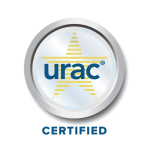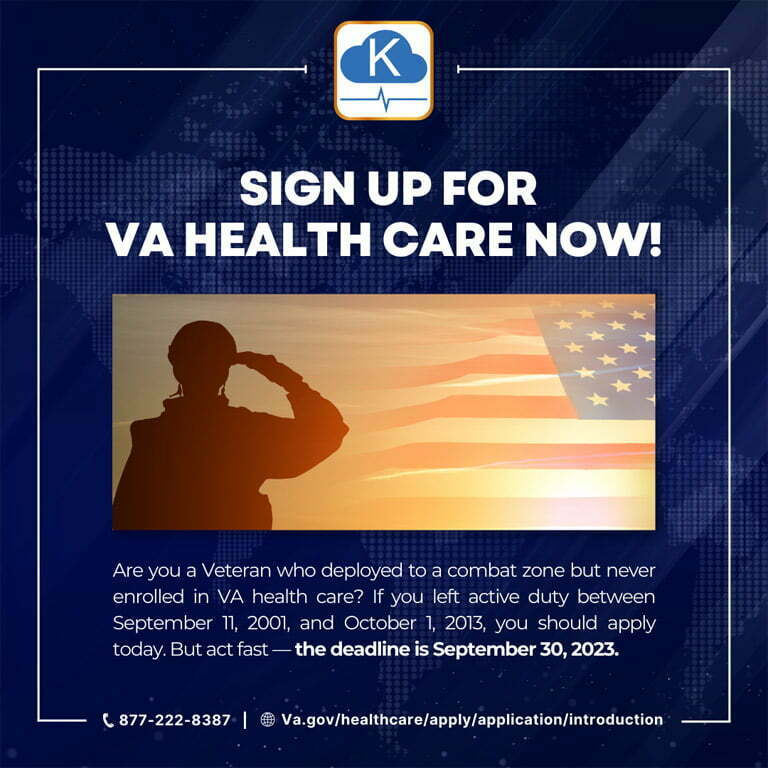As a registered nurse, you play a pivotal role in effectively managing and treating hypertension, a prevalent medical condition impacting countless individuals worldwide. A nursing care plan for hypertension involves assessing and diagnosing the patient, establishing goals and expected outcomes, and implementing nursing interventions to manage blood pressure levels and reduce the risk of complications.
But what if I told you there’s a powerful tool to enhance your care plan? It’s essential to recognize the significance of developing a comprehensive nursing care plan for hypertension, and in this article, we’ll delve into how remote patient monitoring can revolutionize your approach.
Join us to explore the world of hypertension nursing diagnosis and interventions, and discover how you can provide superior care. Are you ready to unlock the full potential of your hypertension care strategies? Let’s get started!
What Is Hypertension?
Hypertension is a medical condition characterized by high blood pressure, defined as a sustained blood pressure reading of 130 mmHg or higher for systolic pressure and 80 mmHg or higher for diastolic pressure. There are two types of hypertension:
• Primary hypertension: no identifiable cause
• Secondary hypertension: caused by an underlying medical condition such as kidney disease, hormonal disorders, or obstructive sleep apnea.
Risk factors for developing hypertension include: obesity, smoking, high salt intake, lack of physical activity, stress, and genetics. Symptoms of hypertension are often silent but may include headache, dizziness, blurred vision, or shortness of breath in severe cases.
As a registered nurse, it is essential to assess the patient’s blood pressure regularly and identify any risk factors for hypertension. This information can help guide the nursing care plan and interventions for managing and treating the patient’s hypertension.
Hypertension Nursing Care Plan
Developing an effective nursing care plan for hypertension involves:
- Assessing the patient’s blood pressure at rest and during activity, examining medical history, medications, and any underlying medical conditions contributing to the patient’s hypertension.
- Establishing goals and expected outcomes for the nursing care plan, such as reducing blood pressure levels, managing risk factors, and promoting healthy lifestyle changes.
- Implementing nursing interventions like stress management techniques, medication compliance education, and dietary approaches to stop hypertension (DASH) guidelines.
- Regularly monitoring the patient’s blood pressure and adjusting medication dosages.
In severe cases of hypertension, nursing interventions may include:
- Hospitalization and critical care management.
- Administering vasodilator or calcium channel blocker medications.
- Monitoring capillary refill and signs of heart failure.
- Assessing for increased cerebral vascular pressure or pulmonary congestion secondary to developing hypertension.
An effective nursing care plan for hypertension involves a comprehensive assessment, establishing goals and expected outcomes, and implementing nursing interventions to manage blood pressure levels and reduce the risk of complications.
Nursing Diagnosis for Hypertension
Establishing an appropriate nursing diagnosis is essential to develop an effective nursing care plan for hypertension. The North American Nursing Diagnosis Association (NANDA) provides a comprehensive list of nursing diagnoses relevant to hypertension care.
Nursing care plans for patients with hypertension must be individualized based on the patient’s specific situation. However, some common nursing diagnoses may be used when caring for patients with hypertension. These nursing diagnoses include:
- Risk for decreased cardiac output related to hypertension, indicated by increased blood pressure readings and capillary refill time.
- Ineffective health maintenance related to a lack of knowledge about hypertension management.
- Risk for impaired cerebral tissue perfusion related to increased cerebral vascular pressure secondary to hypertension.
- Risk for decreased renal perfusion related to decreased blood volume secondary to hypertension.
- Risk and early signs for heart disease and stroke.
Nursing Interventions for Hypertension Care Plan
Nursing interventions are an essential part of the nursing care plan for hypertension. These interventions aim to manage and treat hypertension while promoting optimal health outcomes for the patient.
- Monitor Blood Pressure: The nurse should regularly monitor the patient’s blood pressure to assess for changes in blood pressure levels and adjust medication dosages as needed.
- Medication Management: The nurse should educate the patient on the importance of medication compliance and the potential side effects of medication. The nurse should also monitor the patient for adverse reactions to medications.
- Lifestyle Changes: The nurse should educate the patient on lifestyle changes such as dietary approaches to stop hypertension (DASH) guidelines, exercise, and stress management techniques.
- Stress Management: The nurse should teach the patient stress management techniques such as deep breathing exercises, meditation, and progressive muscle relaxation.
- Education: The nurse should educate the patient on hypertension, potential complications, and the importance of regular medical check-ups.
- Home Blood Pressure Monitoring: The nurse should teach the patient how to monitor their blood pressure at home and provide them with a blood pressure cuff.
- Risk Factor Identification: The nurse should assess the patient for risk factors such as obesity, smoking, and a sedentary lifestyle and educate the patient on the importance of managing these risk factors.
- Nutritional Counseling: The nurse should provide the patient with nutritional counseling and education on the DASH guidelines, including reducing sodium intake.
- Medication Adherence: The nurse should assess the patient’s adherence to medication and provide education on the importance of taking medication as prescribed.
- Referral to a Specialist: The nurse should refer the patient to a specialist, such as a cardiologist or an endocrinologist, for further evaluation and management.
Nursing interventions for hypertension care plans aim to promote optimal blood pressure levels and reduce the risk of complications while improving the patient’s quality of life. The nurse can help patients achieve optimal health outcomes by providing quality care and education.
Treatment for Hypertension
The treatment of hypertension usually involves a combination of lifestyle modifications and medication.
Lifestyle modifications
Patients diagnosed with hypertension must make significant lifestyle modifications to effectively manage their condition and reduce the risk of complications. These modifications encompass various aspects of daily life:
- Healthy Diet: This typically involves reducing their sodium (salt) intake, which can help lower blood pressure. Emphasize the consumption of fruits, vegetables, whole grains, lean proteins, and low-fat dairy products. Encourage portion control and discourage the consumption of high-sugar and high-fat foods.
- Regular Exercise: Patients should engage in at least 150 minutes of moderate-intensity aerobic exercise or 75 minutes of vigorous-intensity aerobic exercise each week.
- Stress Management: Teach patients stress-reduction techniques such as deep breathing exercises, meditation, and mindfulness. Self-care for pulmonary hypertension is especially important.
- Limit Alcohol and Caffeine: Educate patients on the potential effects of these substances and recommend moderation. For those who consume alcohol, suggest limiting it to moderate levels, which is generally defined as up to one drink per day for women and up to two drinks per day for men.
- Smoking Cessation: Patients who smoke must be strongly encouraged to quit. Offer resources and support to assist them in their smoking cessation journey.
- Regular Monitoring: Patients should monitor their blood pressure regularly, both at home and during healthcare visits. This practice helps track progress and allows for timely adjustments to the treatment plan if needed.
Medications
In cases where lifestyle modifications alone do not achieve adequate blood pressure control, medication may be prescribed. The primary care provider may prescribe various drugs depending on the patient’s situation. Some commonly prescribed medications for hypertension include diuretics, ACE inhibitors, angiotensin receptor blockers, beta-blockers, calcium channel blockers, and vasodilators. These medications help lower blood pressure by reducing blood volume in the body, relaxing the blood vessels, or decreasing the heart’s activity.
Patients with hypertension must take their medications as their primary care provider prescribes. They must also monitor their blood pressure regularly at home or in a healthcare setting. In some cases, patients may need to take medications for hypertension for the rest of their lives.
Nurses must educate patients with hypertension about the importance of following their treatment plan and making lifestyle modifications. Nurses must also monitor patients for side effects of medications and assess their blood pressure regularly to ensure their treatment is effective.
How Can RPM Help with a Nursing Care Plan?
RPM technology has become a valuable tool in enhancing nursing care plans for hypertension. Through continuous tracking of vital signs and patient data, RPM allows registered nurses to monitor blood pressure, heart rate, and other relevant metrics in real-time. This not only provides a more comprehensive and accurate understanding of the patient’s condition but also enables early detection of any concerning changes. With this timely data, nurses can make informed decisions, adjust treatment plans, and provide timely interventions, all while ensuring patients receive the right care at the right time. In the context of hypertension, remote patient monitoring offers a proactive approach to managing the condition, reducing the risk of complications, and promoting better patient outcomes.
DrKumo RPM Solutions for Management and Care Plan for Hypertension
MSOs, or Management Service Organizations, are entities that provide various non-clinical services to healthcare providers or practices. MSOs with nurses, it’s essential to prioritize hypertension management in your patient care plans. By utilizing remote patient monitoring technology for nursing care plans, healthcare providers can collaborate with patients to develop personalized care plans and track progress toward achieving their health goals. Encouraging your nursing staff to stay up to date on the latest guidelines for hypertension diagnosis and treatment and providing ongoing training and education on effective nursing interventions is essential.
DrKumo is a technology leader in highly scalable, HIPAA-compliant, mobile-enabled, continuous, real-time remote patient monitoring solutions for chronic disease management, acute care, post-operation, and hospital care at home.
DrKumo RPM can be especially important in managing hypertension, as it allows healthcare providers to remotely monitor patients’ blood pressure readings and adjust their care plans accordingly. It is helpful for patients who have difficulty coming to regular in-person appointments, live in remote areas, or have mobility issues. RPM can also help identify potential complications early on, allowing for timely interventions and reducing the risk of adverse outcomes.
Frequently Asked Questions
What is hypertension, and how is it diagnosed?
Hypertension is a medical condition characterized by high blood pressure, typically defined as a sustained blood pressure reading of 130/80 mmHg or higher for systolic and diastolic pressure, respectively. Diagnosis involves measuring blood pressure, considering risk factors, and ruling out secondary causes.
What are the key components of a nursing care plan for hypertension?
A nursing care plan for hypertension includes assessing the patient’s medical history, blood pressure, and potential risk factors. It also involves setting goals, implementing interventions like lifestyle modifications and medication management, and regularly monitoring blood pressure.
How often should a patient with hypertension have their blood pressure monitored?
Regular blood pressure monitoring is essential for patients with hypertension. Typically, healthcare providers recommend monitoring at home and during healthcare visits. The frequency may vary, but it’s often advised at least several times a week.
Are there specific dietary guidelines or diets that are recommended for managing hypertension?
Yes, the Dietary Approaches to Stop Hypertension (DASH) guidelines are often recommended. They emphasize consuming fruits, vegetables, whole grains, lean proteins, and low-fat dairy products while reducing sodium intake. Following these guidelines can be beneficial for managing blood pressure.
Can hypertension be completely cured, or is it a lifelong condition?
Hypertension is typically a chronic condition. While it can be managed effectively through lifestyle changes and medication, it is usually not completely cured. Successful management aims to control blood pressure and reduce associated risks.
What is the role of family support in managing hypertension, and how can family members assist patients with this condition?
Family support is essential in managing hypertension. Family members can encourage patients to follow their care plans, help with meal preparation, promote exercise, and provide emotional support in stress management.
What are the potential complications of unmanaged hypertension, and how can they be prevented or minimized?
Unmanaged hypertension can lead to complications like heart disease, stroke, kidney damage, and more. Prevention involves regular medical check-ups, adhering to the care plan, and early intervention when issues arise.
How can healthcare providers use remote patient monitoring (RPM) to improve hypertension care plans for patients?
RPM allows healthcare providers to remotely monitor patients’ blood pressure, heart rate, and other vital signs. It facilitates early intervention, medication adjustments, and personalized care, which can result in better hypertension management and patient outcomes.
Takeaways
Developing a nursing care plan for patients with hypertension is essential to their treatment and can help improve their quality of life. Accurate diagnosis and appropriate interventions are crucial in managing hypertension and preventing its complications.
Nurses and other healthcare professionals must remain up to date with current guidelines and best practices in hypertension management to provide effective patient care. Nurses can play a crucial role in managing hypertension and promoting positive health outcomes by working collaboratively with primary care providers and educating patients on lifestyle modifications and medication adherence.
Consider incorporating remote patient monitoring technologies into your care plans to improve patient outcomes and reduce healthcare costs. Contact us now!









